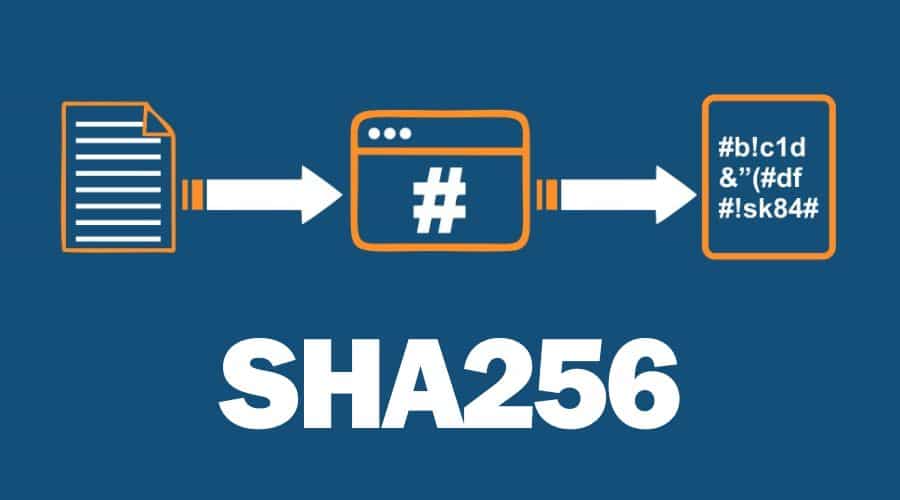Secure Hash Algorithm 256 (SHA-256) serves as a pivotal tool in this pursuit, creating unique digital fingerprints for information and safeguarding its integrity. The ease of access provided by online SHA-256 generators has streamlined this process for users worldwide.
Yet, beneath the convenience lies a landscape rife with potential risks. These online tools, while user-friendly, may harbor security vulnerabilities and data privacy concerns. Exploring the functionality and reliability of these generators is crucial to understanding their utility in a world where safeguarding sensitive information is non-negotiable.
What is SHA-256?

SHA-256, part of the SHA-2 family developed by the NSA, is a cryptographic hashing algorithm crucial for verifying data integrity. It generates a 256-bit hash, significantly more resistant to collision attacks compared to its predecessor, SHA-1. This algorithm computes a unique digital fingerprint of fixed length from input data, ensuring data integrity and security.
It operates as a one-way function, generating the hash from any data, but it is impossible to reverse-engineer the original data from the hash. Widely used for online security, SHA-256 remains a robust and trusted method for verifying and securing digital information.
Uses of SHA-256

SHA-256, a cryptographic hashing algorithm, plays a crucial role in various security applications due to its one-way encryption nature, making decryption almost impossible. Its uses span across diverse fields:
- Password Security: Employed for password validation and storage by hashing user passwords before storing them in databases, enhancing security against breaches.
- Data Integrity and Verification: Used to check data integrity, ensuring files remain unaltered during transfer or download by comparing hash values. Additionally, SHA-256 enables digital signature verification, confirming message authenticity and sender identity.
- SSL/TLS Encryption: Integral in SSL/TLS certificates, ensuring secure internet connections by enabling asymmetric encryption and utilizing public and private keys for data encryption and decryption.
- Cryptocurrency and Bitcoin: Forms the backbone of Bitcoin's security, used in mining to secure the network, create Merkle roots for transaction records, and generate unique addresses (private keys) essential for transactions.
- File Integrity and Authentication: Enables file integrity verification by creating checksums, ensuring files haven't been tampered with or corrupted.
Securing Data Using SHA-256 Hashing
Cryptographic hashing revolves around generating fixed-size hash values from arbitrary data. The core principles of these hash functions ensure both security and computational efficiency.
- Fixed Output, Variable Input: Regardless of the input size, cryptographic hash functions always produce a fixed-size hash. This ensures practicality and consistency in handling diverse data types.
- Computational Efficiency: The efficiency of hash functions is crucial. They must swiftly generate hash values for practical use in various applications without consuming excessive computational resources.
- Pre-image Resistance: A critical aspect is ensuring that the output does not reveal any details about the input. This prevents revealing information about the original data, maintaining security.
- Collision Resistance: It is vital that it's practically impossible to find two different inputs that result in the same output, ensuring the integrity of the hashing process.
- Deterministic Nature: A hash function always generates the same output for any given input. This deterministic property ensures reliability and consistency in hashing operations, regardless of input length.
- Role in Information Security: Hash functions are foundational to information security. They take input and consistently produce an output, which is crucial in secure data handling.
- Modular Functions as an Example: Understanding hash functions is akin to comprehending modular functions, where a specific input always generates the same output, analogous to clock arithmetic in producing remainders.
How to use SHA-256 Online Generator
Using a SHA-256 online generator is quite simple:
- Copy and paste or type the data you want to hash into the provided field.
- Click on the “Generate” or “Hash” button. The tool will process the input data using the SHA-256 algorithm.
- Once processed, the tool will display the SHA-256 hash value corresponding to your input data. You can copy this hash and use it for verification or storage purposes.
How Secure is SHA-256?
SHA-256 stands as a highly secure cryptographic hash function due to its resistance against brute force attacks, pre-image and collision resistance properties, and widespread adoption within the cryptographic community. Its 256-bit fixed-length output makes it incredibly challenging to reverse-engineer the original input.
Furthermore, it is extensively used in applications like Bitcoin mining and blockchain, leveraging its robustness to ensure data integrity and authentication. Additionally, SHA-256 is pivotal in various encryption applications such as SSL/TLS, SSH, and network security, emphasizing its crucial role in protecting sensitive data during transfer and ensuring secure connections.
Conclusion
The SHA256 online generator offers convenience in creating secure hash values, supported by its resilience against attacks and widespread adoption. However, users must remain cautious with sensitive data. SHA256's significance extends to Bitcoin mining, blockchain, and encryption protocols like SSL/TLS, emphasizing its crucial role in securing data during transfer. Adherence to best practices ensures maximal benefits from these generators while prioritizing data security.

